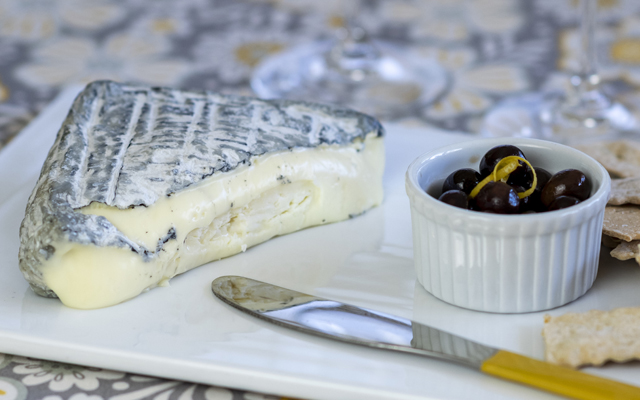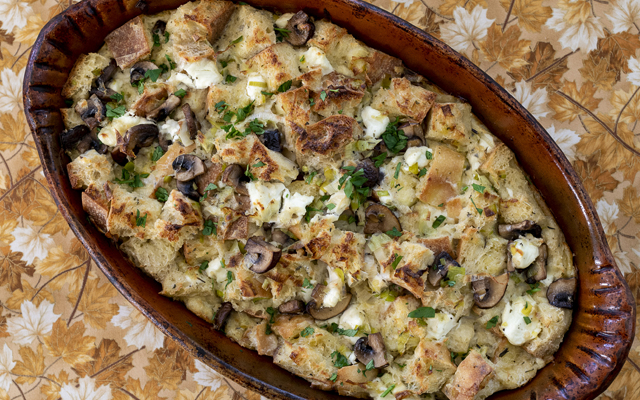Janet Fletcher, Planet Cheese
Why Cheese is My Wheelhouse
Say Cheese! It’s almost time for the 17th annual California Artisan Cheese Festival, March 24-26 at the Sonoma County Event Center in Santa Rosa – an opportunity to meet cheesemakers, sample Sonoma County wine and beer, learn about local farms and dairies, and attend cheesemaking seminars.
Few people know cheese like cookbook author and expert, Janet Fletcher, of Planet Cheese, who just announced her 11th annual World Cheese Tour classes at Winston’s Café in Napa.
We wanted to know the why of whey, and how she came to be a foremost authority on cheese.
Tell us how and why you became cheese-obsessed.
As a food writer and cookbook author, I am always looking for the next food trend. In the late 1990s, I noticed that restaurants were starting to get more creative with the cheese course. In the past, you might get a cold wedge of tired Brie when you ordered cheese in a restaurant. But a few ambitious restaurants were starting to serve better cheeses with housemade bread or interesting condiments. I thought I might do a little book on these new ideas for serving cheese that would make it more appealing to people who weren’t accustomed to having a cheese course. My book, The Cheese Course, was published in 2000. At the time I was on the food staff at the San Francisco Chronicle and they asked me to start writing a weekly cheese column. And that was the slippery slope that led to my deep dive into cheese, if I can mix metaphors.
Who came up with the name “Planet Cheese?”
I did. Maybe in the shower. I have no recollection of how or when, to be honest. But I still like it because it suggests that cheese is an enormous world of adventure and discovery, which is how I feel about it. Planet Cheese is going on nine years old, and I have posted once a week without fail. There’s always something cheesy to write about, whether it’s a new cheese, a recipe, an event or an important issue.
What’s your first memory of cheese?
Not good. Unless guests were coming, the only “cheese” we had in my childhood home was Velveeta. And there’s a reason I put that in quotes. When guests came, my mother upgraded to Cracker Barrel.
What’s the most unusual animal from which you’ve had cheese?
I guess it would be yak. Some people who had been working in rural Tibet brought yak cheese to a cheese event I attended in Wisconsin a few years ago. It was pretty nasty, although I don’t think it has to be.
What are some of the best new cheeses you tried in 2022 and how did you discover them?
Typically, I discover cheeses when I spot them in a store for the first time, or realize that I’ve been looking at that cheese for a long time and never tried it. Sometimes cheesemakers send me new items, but mostly I stumble on them or hear about them from distributors.
I adore all 10 cheeses I wrote about in a recent post (2022Unforgettables), like Boont Corners from Pennyroyal Farm (goat’s and sheep’s milk from Anderson Valley). This aged raw milk wheel has a natural rind, an aroma of damp cave, roasted nuts and artichoke, and a sturdy texture that finishes creamy. However, most aren’t “new” in the sense of recently created. Some are just relatively new imports, like Rispens (a sheep Gouda), Ur-Eiche (a raw cow’s milk cheese from Switzerland) and Fleur Soleil (an herb-coated goat cheese from France). Others are relatively new on the West Coast, like Rocket’s Robiola from Boxcarr Handmade Cheese in North Carolina.

What cheese will you absolutely never eat again?
Velveeta. At least not knowingly.
It seems like fondues and raclettes are making a comeback. Will this stay on trend?
Who doesn’t love melted cheese? I had a post in Planet Cheese a couple of years ago sharing some fondue tips from Joe Salonia, a New Yorker who is a past Fonduel champion. Fonduel is a goofy competition among people in the cheese trade. Joe is a sales rep for a Swiss cheese consortium so he knows fondue. I shared his recipe and tips in Planet Cheese.
What’s your fave combo for creating a fondue that takes you to the Swiss Alps from the first dip?
Gruyère for sure. Then something stronger like Raclette, Appenzeller or Challerhocker. A good Fontina Val d’Aosta or Comté is also nice to include but neither is Swiss.
Current favorite cheeses from California?
Oh, don’t make me choose. But I’m really impressed with the cheeses coming from Pennyroyal Farm in Boonville. I love Laychee, their freshest cheese, and Boont Corners, their 2- to 4-month-old rinded raw-milk wheel. Both are goat cheeses with sheep’s milk added, when they have it. (Sheep are off-duty from September through February.)
What state in the US is totally underrated for cheese?
Wisconsin. Many people (including some in Wisconsin) associate the state with cheese curds and inexpensive non-branded Cheddar. But there are some first-rate producers there, including Uplands Cheese (Pleasant Ridge Reserve, Rush Creek Reserve), Hook’s (for aged Cheddar and blue cheese), Hidden Springs Creamery (for sheep cheese), Carr Valley (for Cave Aged Marisa, a sheep cheese) and Deer Creek Cheese for its large line of aged Cheddars.
You have a bottle of very rich, ripe Cabernet, a bottle of Sauvignon Blanc and a fruity Russian River Pinot. What are your go-to cheeses for maximum enjoyment with these styles of wine?
With Cabernet, I love an aged sheep cheese, like Manchego or a pecorino Toscano or Friesago from Shepherd’s Way Farms in Minnesota. But my favorite in that category would be Ossau-Iraty, an aged sheep cheese from the French Pyrenees.
With Sauvignon Blanc, if it’s steely and not oaky, I like a young goat cheese: Cypress Grove’s Humboldt Fog, Vermont Creamery’s Bonne Bouche or Coupole, or Tomme de Chèvre Grandmère from France.
With Pinot Noir I like a cheese with some mushroomy notes. Ferme de la Tremblaye’s Brie Fermier is a good choice, as is the Boont Corners from Pennyroyal. A truffled Brie takes the mushroom theme to another level.
Need to take your curd IQ to the next level? Sign up for Janet’s Planet Cheese weekly newsletter and receive a copy of her “10 Best Buys at The Cheese Counter:”

Focaccia Bread Pudding with Mushrooms & Goat Cheese
I developed this recipe for Wine Institute as an accompaniment to California Pinot Noir. Roast chicken is its ideal companion or serve it with a green salad for a meatless meal. – Janet Fletcher
Serves 4 to 6
• 2 teaspoons unsalted butter
• 3 tablespoons extra virgin olive oil
• ½ pound mushrooms, cultivated or wild, sliced or quartered
• Sea salt and freshly ground black pepper
• 2 cups thinly sliced leeks, white and pale green part only
• 2 cloves garlic, minced
• 1 teaspoon dried herbes de Provence
• ½ pound plain focaccia, 1 to 2 days old, in 1-inch cubes
• 4 large eggs, beaten
• 2 cups whole milk
• 4 to 5 ounces fresh goat cheese with no rindPreheat an oven to 375°F. Using 1 teaspoon butter, grease the bottom and sides of a 2-quart baking dish.
An oval baking dish measuring about 13x8x1-1/2 inches works well.
Heat 1-1/2 tablespoons olive oil in a large skillet over medium-high heat. Add the mushrooms. Do not stir for 30 seconds to allow the mushrooms to sear on one side. Then season with salt and pepper and continue cooking, stirring occasionally, until the mushrooms are nicely browned and tender, about 3 minutes, adjusting the heat if necessary to prevent scorching. Set aside on a plate.
Let the skillet cool slightly, then add the remaining 1-1/2 tablespoons olive oil and return to medium-low heat. Add the leeks, garlic and herbes de Provence. Sauté until the leeks are soft, about 5 minutes.
In a large bowl, combine the focaccia, mushrooms and leeks. Toss gently with a spatula.
In a bowl, whisk together the eggs, milk, 1 teaspoon salt and several grinds of black pepper. Pour over the bread mixture and stir gently with a rubber spatula. Let stand for 15 minutes, stirring once or twice, so the bread absorbs some of the liquid. Add the goat cheese in small clumps, then stir gently to distribute.
Transfer to the prepared baking dish and dot the surface with the remaining 1 teaspoon butter. Bake until puffed, nicely colored on top, and firm to the touch, about 35 minutes. If you want it a little more crusty on top, put it under a preheated broiler for a minute or two. Watch closely!
Let cool 15 minutes before serving.